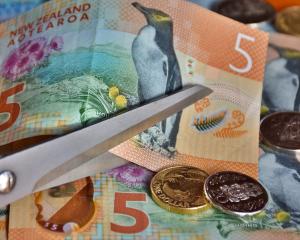
Container numbers rose 10% to 205,000, a record 1.06 million tonnes of logs was moved across the wharves, fuel volumes rose 16% and ship calls rose 7% to 529 arrivals.
Port Otago chairman Dave Faulkner said the company's performance reflected the activity of exporters from across Otago and Southland.
''They're busy and product is moving, which is evident in the tonnages we're seeing across the port,'' Mr Faulkner told the ORC at a briefing yesterday.
Revenue for the year rose 22% to $109.4 million, earnings before interest and tax rose 2% to $12.7 million and after-tax profit rose $13% to $43.9 million.
Debt rose from $68.4 million to $77.6 million, with a further facility of about $20 million to draw on.
Mr Faulkner said after the meeting he was ''comfortable'' with the debt, given it was around 80% of the debt to equity ratio.
The $9 million dividend included a $1.5 million special dividend and takes the total of all dividends paid to the ORC since 1988 to just over $165 million.
During question time, Cr Michael Laws, who has been vocally critical of the size of dividend paid, asked Mr Faulkner if, given Port Otago was ''cash heavy'', it could sustain that level of dividend?
Mr Faulkner said Port Otago's intent, subject to trading conditions, was to pay a $7.5 million dividend and $750,000 special dividend next year, and thereafter increase the $7.5 million by $250,000 each year, for the coming decade.
Mr Laws pressed Mr Faulkner over property arm Chalmers Properties, which had $19 million of sales last year and expects $31 million in the coming financial years, as Hamilton property is further developed and sold.
''What will you do with that [$31 million]?'' Mr Laws asked.
Mr Faulkner replied there was always infrastructure spending to consider and that Chalmers Properties was in talks about developing some bare land it owns in Auckland.
Cr Andrew Noone asked about the upgrade of straddle cranes in the future, and viability of going electric.
Port Otago chief executive Kevin Winders said while the company was looking at making all vehicles across its business electric, many of the hybrid versions were not yet powerful enough, or not yet even in commercial production.
''We have to wait for technology to catch up,'' he said, but noted hybrid ''small diesel and electric'' were the focus.
Cr Stephen Woodhead asked if the current overall growth in cargo handling was ''repeatable'', during the next two years.
Mr Winders replied that if rural Otago and Southland had good weather over the spring and summer growing seasons, that would translate into good exports.
He expected export growth from Oceania's dairy plant near Glenavy and also sawn timber miller Pan Pac at Milburn, but threw in a caution that export volumes were closely linked to Chinese demand for commodities.
Cruise ship numbers last season were 87 and expected to rise 117 this coming season, from which Mr Winders thought the Otago economy would get a boost from last year's $56 million spent to $75 million.
''Cruise ships are going to be a growth industry for us,'' he said.
Mr Winders said $35 million in capital expenditure was coming to an end, including $22 million being spent on a Port Chalmers wharf extension and $8 million purchase of a second-hand French backhoe dredge, which was only 40% of its ''new-build cost''.
While rival Lyttelton Port of Christchurch was dredging channels to 13m, Port Otago was already past that depth and the backhoe dredge would be doing further channel dredging in the future, he said.
Chalmers Properties' earnings before interest and tax rose from $13.5 million a year ago to $18.4 million. Its property portfolio rose by $22 million unrealised gain to $349 million; being up 4% to $168 million in Dunedin, up 8% to $136 million in Auckland and $45 million in Hamilton.
Demolition of an large asbestos shed in Fryatt St is due to start at the end of October, with a projected costing of $2.9 million, and to be completed and the area open to the public again by March next year.












